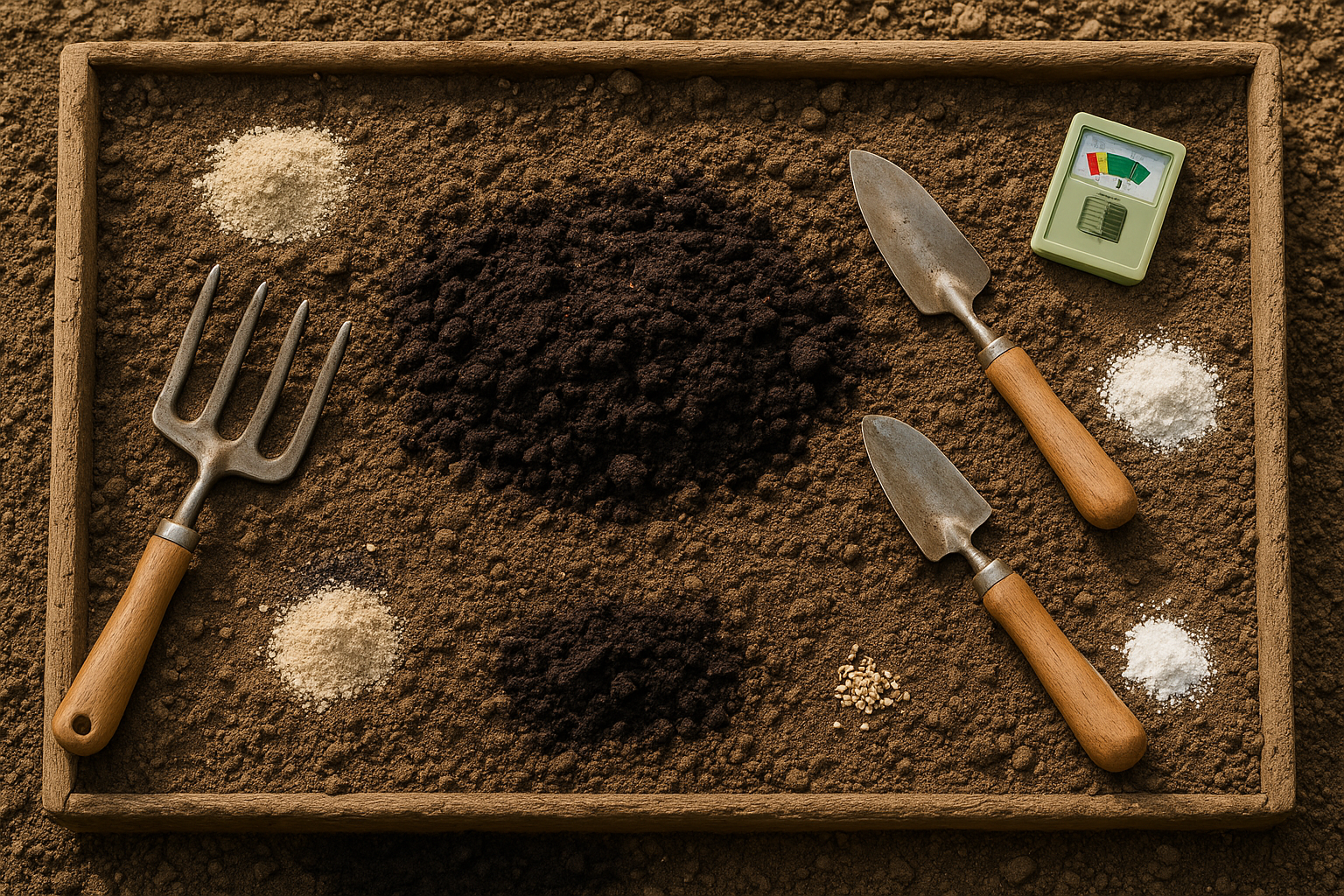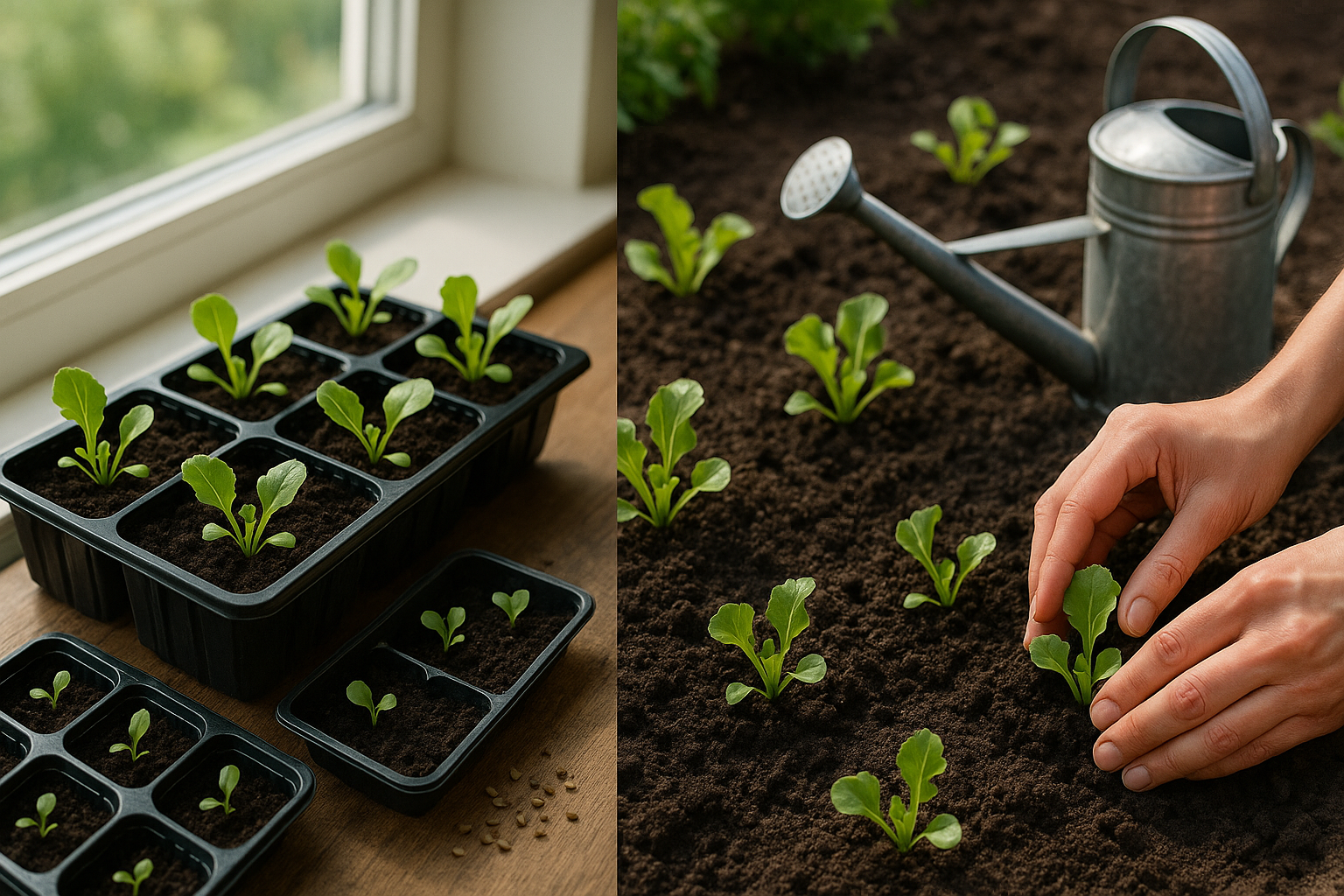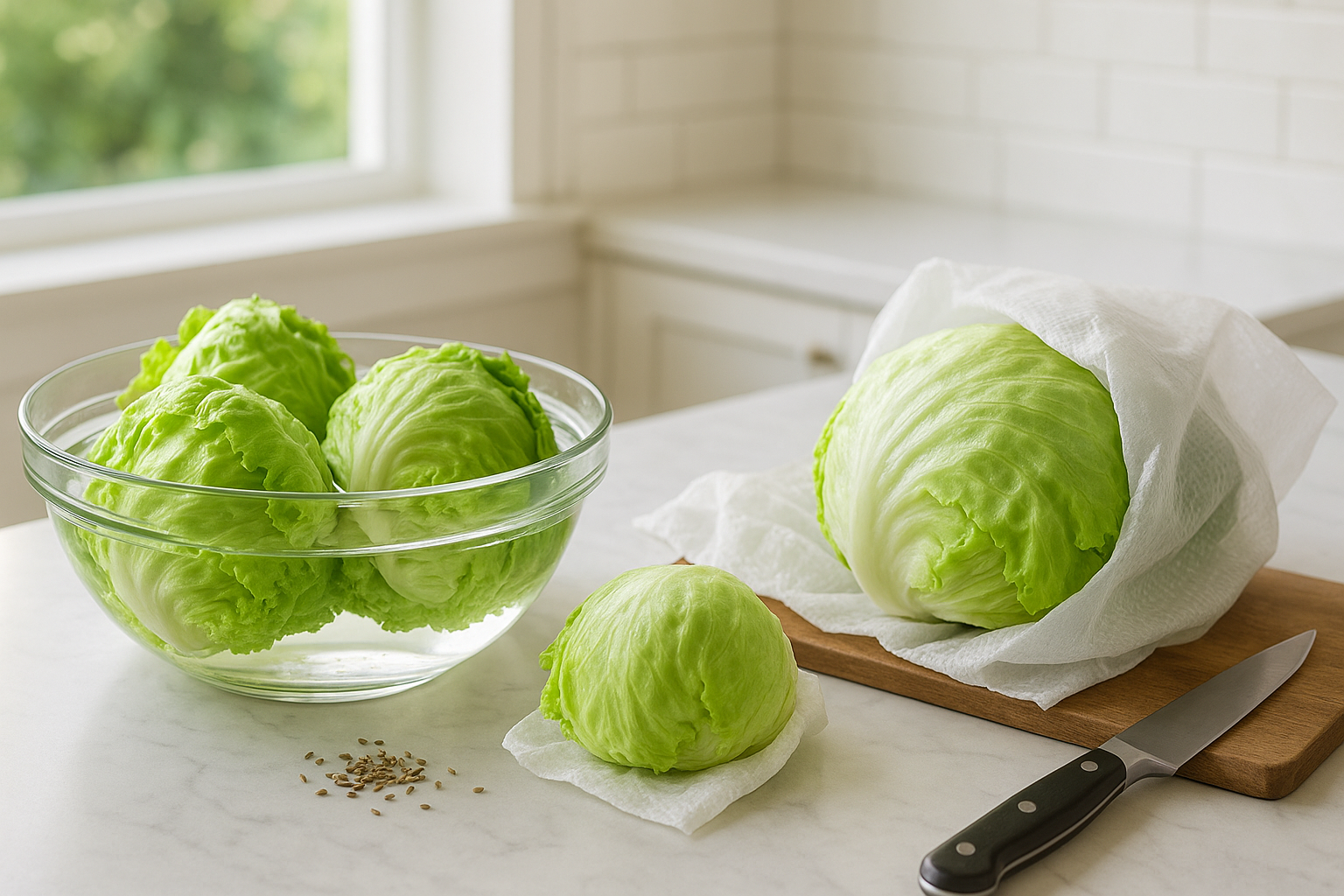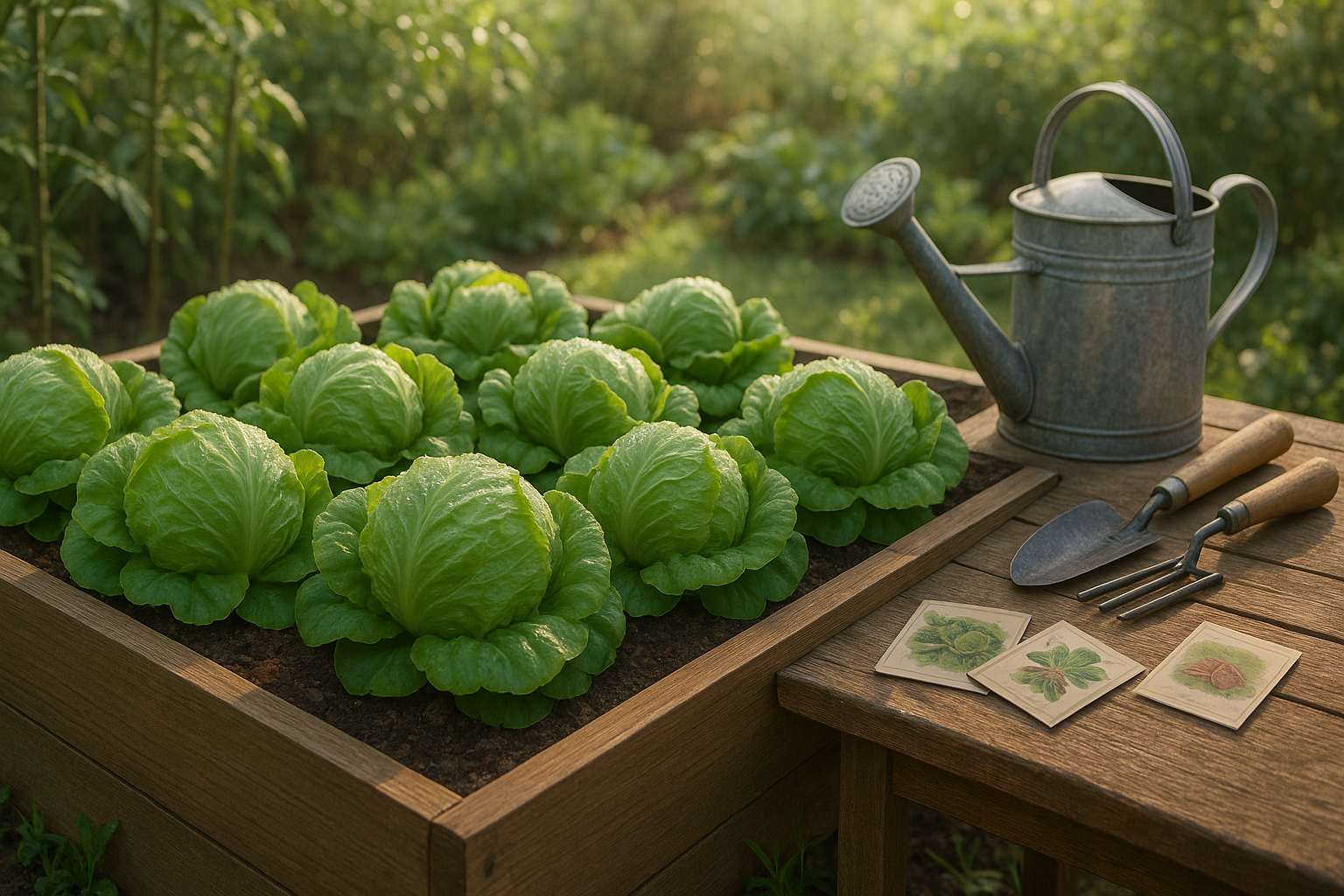Introduction
Growing iceberg lettuce at home has become a favorite for gardeners who love the crisp texture and mild flavor of this popular salad green. Not only does home-growing ensure you get the freshest, crunchiest heads, but it also lets you control the quality and taste far beyond what you find in grocery stores. Imagine stepping outside to harvest a perfectly crisp head of lettuce for tonight’s dinner—there’s nothing fresher! In this article, you’ll find simple, practical tips to help you grow iceberg lettuce with tight, crisp heads full of homegrown flavor.
Choosing the Right Iceberg Lettuce Variety
When picking the right iceberg lettuce variety for your home garden, start by considering tried-and-true crisphead types like Great Lakes or Ithaca. These classics are popular for their consistently firm heads and mellow flavor.
If you live in a warmer climate, heat-tolerant cultivars such as Nevada or Summertime are excellent choices—they’re bred to resist bolting when temperatures rise, extending your harvest window.
For gardeners worried about common lettuce diseases like downy mildew or tip burn, look for seeds labeled as disease-resistant, such as Igloo or Legacy. These varieties are developed to stand up to local threats and reduce your need for chemical interventions.
Always check your seed packets for the “days to maturity” info to match your region’s growing season—short-season varieties do well in northern zones, while more heat-resilient, slow-bolting types thrive in the south.
Local agricultural extension offices or reputable online seed suppliers can provide advice on varieties best suited to your specific region, ensuring your garden’s lettuce crop thrives in whatever conditions Mother Nature brings.
If you’re a beginner, choose a couple of different cultivars and stagger your plantings to see what flourishes best in your hands and climate.
Preparing the Soil and Garden Bed

To give your plants the best start, aim for soil that’s loose, crumbly, and drains water easily. Avoid heavy clay or compacted dirt, which can suffocate roots and cause rot. Rich organic matter, like well-rotted compost or aged manure, helps the soil hold just enough moisture and delivers nutrients as plants grow.
Most vegetables and flowers thrive in soil with a neutral pH of around 6.0 to 7.0. It’s easy to check your soil’s pH level using a simple home test kit from a garden center or online. If your pH is too low (acidic), mix in garden lime; if it’s too high (alkaline), incorporate sulfur or peat moss.
Before planting, loosen the garden bed soil to a depth of at least 8–12 inches using a spade or garden fork. Mix in compost and, if needed, other amendments like perlite for drainage or worm castings for a nutrient boost. For raised beds or containers, using a high-quality potting mix blended with compost provides an easy, ready-to-plant base.
Don’t forget to remove weeds and larger stones as you prep—starting with great soil makes all the difference for healthy, vigorous plants.
Sowing and Planting Techniques

Getting your lettuce planting right starts with timing. Sow seeds indoors about 4 to 6 weeks before your last expected frost for an early start, using seed trays filled with a light, fluffy potting mix. This gives seedlings a head start when it’s still too chilly outside.
Once soil temperatures reach 50-65°F (10-18°C), you can direct sow outdoors, spacing seeds about 1 inch apart in rows 12 to 18 inches apart. Only cover seeds with a thin dusting of soil—about 1/8 to 1/4 inch deep—since lettuce seeds need light to germinate.
When seedlings have 2-3 true leaves, thin them to 6-8 inches apart for leaf varieties, or 10-12 inches for head types, giving each plant enough space to grow.
If you’re transplanting, harden off young plants over a week by putting them outdoors for a few hours each day and gradually increasing their exposure. This helps them adjust to outside conditions and prevents stress and bolting (premature flowering). Always transplant in the evening or on a cloudy day to avoid sun shock, and water well after planting.
For a steady lettuce supply, use succession planting: sow a small batch of seeds every 10-14 days throughout the season. This simple technique keeps fresh greens coming and avoids the classic feast-or-famine garden dilemma.
By timing your sowings, minding planting depth and spacing, and staggering your seedlings, you’ll enjoy crisp, homegrown lettuce week after week.
Caring for Growing Iceberg Lettuce
When caring for growing iceberg lettuce, mastering watering is key—aim to keep the soil consistently moist but not soggy, as overwatering can cause roots to rot, while underwatering results in limp, bitter leaves. A simple way to check is to poke your finger an inch into the soil; if it feels dry, it’s time to water.
Applying mulch around your plants helps retain moisture and keeps the soil temperature even—a must for crisp, healthy leaves. During hot spells, use lightweight shade cloth or plant your lettuce where it gets afternoon shade to prevent bolting (when lettuce grows tall and bitter). If frost threatens in spring or fall, row covers provide gentle protection.
Lettuce appreciates a light feeding: mix a balanced, slow-release granular fertilizer into the soil at planting, and boost it with a diluted liquid seaweed or fish emulsion every few weeks. Frequent, shallow cultivation keeps weeds at bay; alternatively, try laying a weed barrier cloth to save time.
Watch for common pests like aphids, slugs, and cutworms—floating row covers act as a physical barrier, while spraying plants with soapy water or sprinkling diatomaceous earth can deter invaders organically. Powdery mildew and lettuce downy mildew are the top diseases to watch for—good airflow between plants and avoiding overhead watering can prevent these issues.
By combining smart watering, mulching, temperature management, natural fertilization, and pest vigilance, you’ll encourage crunchy, flavorful iceberg lettuce all season long.
Harvesting and Storing for Maximum Crispness

Harvesting lettuce at the right time is essential for achieving those tight, crisp heads we all love. Aim to harvest in the early morning when the leaves are most hydrated—simply cut the head at the base with a sharp, clean knife, taking care not to damage surrounding leaves or any new growth at the center. Avoid tearing or pulling, as this can bruise the plant and invite spoilage.
For the best crunch, rinse heads gently in cool water, dry them thoroughly, and store in the refrigerator. Use a breathable bag or wrap the lettuce in a damp paper towel inside a plastic bag to maintain humidity without trapping excess moisture, which can lead to rot. Crispness fades quickly if the lettuce is left at room temperature, so refrigerate soon after picking.
To spot bolted or poor-quality heads, look for elongated stems, bitter-tasting leaves, or a loose, open growth habit—these heads will lack the density and texture you’re after and are better suited for compost rather than the salad bowl. Regularly checking your crop and picking before heads get too mature ensures every harvest is fresh and crunchy.
Conclusion
Growing crisp iceberg lettuce at home is easier than you think—just remember to start with quality seeds, provide plenty of sunlight, and keep the soil moist but not soggy. Pay attention to spacing and watch out for pests to enjoy fresh leaves throughout the season.
Don’t let a lack of experience hold you back; with these tips in mind, you’ll be harvesting crunchy heads in no time. Give it a try and see how rewarding it can be! If you have extra tricks or stories from your own garden, share them in the comments below to help other readers succeed.
